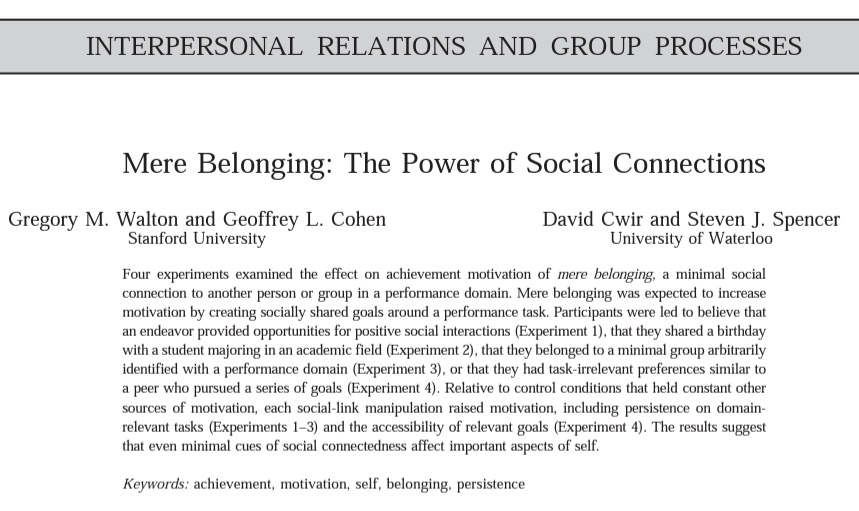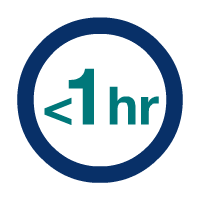Sense of Social Fit Scale

What is it and how does it work?
The Sense of Social Fit Scale is a 17-item self-report rating scale that measures the degree to which an individual feels that they belong in an academic context (e.g., university, college, program, etc.) (Walton & Cohen, 2007). It has previously been used with a range of college student populations including first-generation students (Stephens, Hamedani, & Destin, 2014) and students from diverse racial and ethnic backgrounds (Walton & Cohen, 2007; Walton et al., 2012).
Surveys may be administered multiple times in a semester to collect longitudinal data. Instructors can configure the survey to release results to students for feedback purposes.
Which skill(s) are targeted?
The Sense of Social Fit Scale can be used to collect students' self-report ratings of their own skills in the following competency areas:
- Demonstrate an attitude of inclusion by engaging mindfully across a diversity of lived experiences
Who else has used it?
- 70-106: Business Science course
- Heinz College
- Student Academic Success Center
- School of Computer Science Undergraduate Programs
 Educator time commitment
Educator time commitment
15 minutes
 Student time commitment
Student time commitment
3-5 minutes
Contact eberly-assist@andrew.cmu.edu for help with incorporating this resource.
Educator how-to steps
- Download and review the Sense of Social Fit Scale.
- Specify the appropriate academic context (e.g., school/college, academic program, etc.)
- Decide when students should complete the Sense of Social Fit Scale and then include this in the corresponding assignments/instructions to students.
- Set up the assignment in Canvas (or as you normally would).
Reference
Stephens, N. M., Hamedani, M. G., & Destin, M. (2014). Closing the social-class achievement gap: A difference-education intervention improves first-generation students’ academic performance and all students’ college transition. Psychological Science, 25(4), 943–953. https://doi.org/10.1177/0956797613518349
Walton, G. M., & Cohen, G. L. (2007). A question of belonging: race, social fit, and achievement. Journal of Personality and Social Psychology, 92(1), 82-96. https://doi/10.1037/0022-3514.92.1.82
Walton, G. M., Cohen, G. L., Cwir, D., & Spencer, S. J. (2012). Mere belonging: The power of social connections. Journal of Personality and Social Psychology, 102(3), 513-532. https://doi.org/10.1037/a0025731